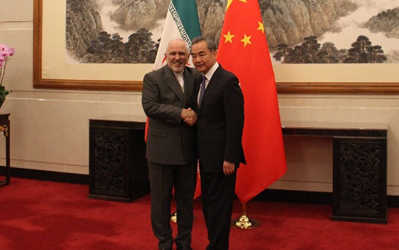The $400 billion strategic partnership between Iran and China is a milestone in the rise of the Middle Hemisphere. It’s somewhat like the Monroe Doctrine of 1923 when the US realized that it didn’t need to physically take over other countries when there were less bloody and messy ways of establishing economic dominance in the Western Hemisphere.
Through the Belt and Road Initiative (BRI) China has already invested billions in every major South Asian and Middle-Eastern country. Alongside the comprehensive cooperation deal between Iran and China came the news that Iran has dropped India from not only the Chabahar-Zahedan railway project but also from the development of the Farzad-B gas field. At the moment India is manning the Chabahar port but once China officially steps in, India’s operational role will most likely be phased out.
In return for the $400 billion investment in Iran over 25 years, China will get “long-term energy contracts plus discounts of more than 30 percent and first refusal rights on all major energy projects in Iran.” Bilateral agreements don’t get better than this.
Reports from within Iran already suggest that one, China will deploy 5,000 security personnel to protect its stakes in Iran, and two, a couple of small islands in the Persian Gulf located at the mouth of the Strait of Hormuz may be handed over to China. Not if but when that happens China will secure control of the largest oil supply route in the world.
This is the place where oil and water will mix. With diverse investments in premiere Middle Eastern and North African countries like Saudi Arabia, Egypt, Algeria, Israel and Iraq to now Iran, China will ultimately gain control of crucial oil routes. And these routes flow into the equally crucial waterways from the Gulf of Oman and Arabian Sea all the way to the South China Sea.
It’s in this broad backdrop that we see the emergence of two power blocs. The Cript and the Quad. In February of this year Iran’s Ambassador to Pakistan Seyyed Mohammad Ali Hosseini highlighted the potential of an alliance between China, Russia, Iran, Pakistan and Turkey to boost cooperation and resolve regional issues. The proposed alliance is being hailed as CRIPT.
So, where does India stand in this power play?
India was doing quite well for itself on the foreign policy front till Modi’s smugness got the better of him. The ‘Neighborhood First’ policy of his first term started to fray after his re-election on promises of Hindutva first. Stripping Indian-occupied Jammu and Kashmir of its ‘Special Status’ by revoking Article 370 is proving to be a linchpin that India so arrogantly and thoughtlessly pulled out. It has disturbed the precarious balance of power in the region between Pakistan, India and China. Modi’s nationalist agenda is making India’s neighbors very uncomfortable while also giving them the much-awaited opportunity to chart an alternate course of future.
Reverberations of the brutal crackdown in IoK, violent riots across India over the highly controversial Citizenship Amendment Act and the National Register of Citizens, and BJP government’s attempt to manipulate the India-Nepal border are being felt across the region. To India’s dismay, even traditional allies are choosing to remain silent over the Sino-Indian border clash.
While Russia continues to be India’s closest trading partner in Eurasia, China and Russia have over the past decade massively expanded their footprint in the Middle Hemisphere. Donald Trump’s US presidency is pushing the Sino-Russian entente cordiale into becoming the “bedrock of an emerging Eurasia”. Trump is also forcing India to pick a side in this realignment of interests. The US has been threatening India with sanctions if it goes ahead with high value arms and trade deals with Russia, just as it did in the matter of Chabahar and which ultimately cost India two extremely vital strategic advantages.
India’s populist government seems ill-equipped to handle this kind of multi-directional pushback and petulantly thinks that an active Quad is the answer to its current geopolitical dilemma. Initiated in 2007 in response to China’s increased economic and military power, the Quadrilateral Security Dialogue or Quad was revived in 2017. It’s as yet an informal China-balancing coalition between the US, Japan, Australia and India, but New Delhi is hedging its bets by embedding itself further into the folds of the Quad.
Despite being a member of the Shanghai Cooperation Organization and several other regional platforms, India appears uninterested in leveraging itself in Eurasia. At least for the moment New Delhi is more focused on the Indo-Pacific and views the Quad as the backbone of its grand regional strategy.
The writer is an executive producer, Geo News and editor of Jang – The Economist annual edition.





